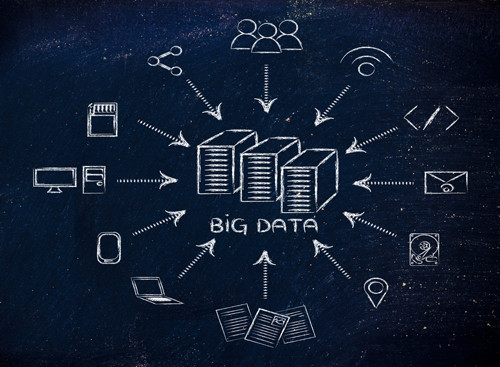How to win the race to meet the digital needs of consumers
We are living in an increasingly digital-first society and consumer attitude to content has changed dramatically as a result. From the way that people interact with ads, to how they want communication messages to be delivered; digital – and particularly data – has completely changed the face of marketing. From the use of internet cookies to track actions, to using mobile data for location based services, a huge amount of information is being collected at every moment.
As the collection and analysis of data has become commonplace, so has its role for marketing professionals in creating personalised, targeted campaigns that meet the growing expectations of today’s connected consumer.
Going Digital: Meeting consumer demand
Consumer interaction with technology has transformed following the ‘everything, everywhere’ nature of the internet and the knock on effect to marketers has been huge. What’s clear is that the way consumers view and interact with branded content is changing and as a result so too is their expectations of how this content should be targeted at them. Why?
Firstly because consumers are using a greater variety of devices; with research finding the average consumer now uses five ‘connected’ devices during the purchase process, compared to 2.8 devices a year ago. Secondly because consumers are spending more time using these devices with research suggesting consumers spend over four hours per day on connected devices. The latter paired with the former has created a complex environment for marketers, one where they need to reach the right consumer, at the right time, on the right device with the right marketing message.
With consumers now bombarded with over 3,500 brand messages daily – across multiple platforms and devices – how can marketers make sure they are keeping up with consumers digital expectations?
Using big data to personalise the experience
One way is to use big data analytics to create targeted, personalised experiences for consumers across multiple devices. Big data has transformed what it means to know your customer; and by analysing sales data, marketing teams can begin to understand who their customers really are and group them based on age, gender, location, income, education, previous purchases or whatever is relevant in their sector.
In fact Fujitsu’s recent Digital Inside Out research found that almost 90% of consumers would use a digital approach when one is available, with a quarter of them always selecting digital first. Against that background, marketers are being presented with a plethora of data – the challenge is how to make sense of it. The insight provided from this data, when analysed effectively can be invaluable in creating targeted marketing messages that drive sales and, ultimately, boost revenue for marketers.
Getting the right infrastructure in place to deliver a personalised brand message is vital from a customer satisfaction point of view. According to a study released this week consumers increasingly want personalised more targeted messages from brands, with two thirds (63%) saying they become increasingly annoyed by repeated generic messaging.
Making customer data work for your business
Making consumer data work for your business however is no quick fix. While the days of scattergun mail-outs are long gone, to create a truly personalised experience for consumers – across all customer facing touch points – marketers need to ensure digital back-ends are aligned to digital front ends.
The problem is that many brands started in the legacy world, and whilst they have been forced (by customer/competitor pressure) to digitise their customer interface, to do the same with their back-end (logistics and operational delivery systems) has been much harder to achieve. In part this is because the real cost lies with updating back-end systems, and because in most cases, these systems work very well, so the inclination to change them is lower. But change them you must – if you wish to be agile in developing new services for your customers and compete on costs with pure-play digital competitors.
When the correct infrastructure is in place data analysis allows marketers to more intelligently target their audience – helping them reach the right people at the right time with the right content. When effectively implemented, nearly a quarter of consumers (24%) said the ability to use personalised digital services when interacting with an organisation makes them more loyal for that brand – a win, win for marketers.






